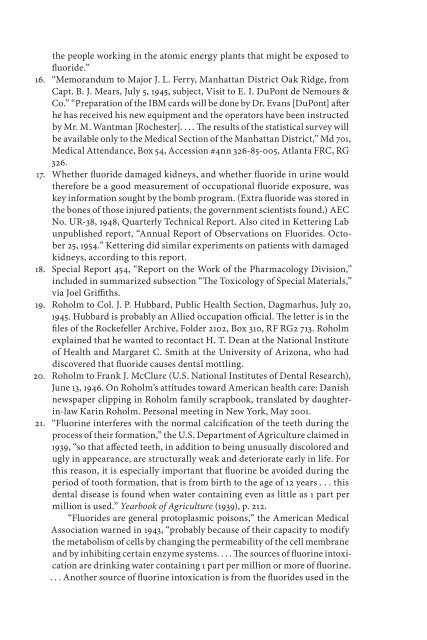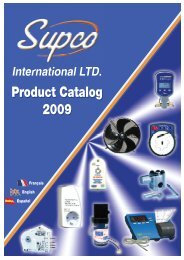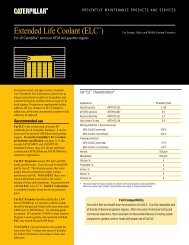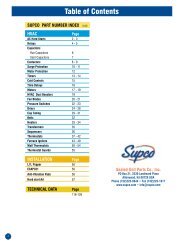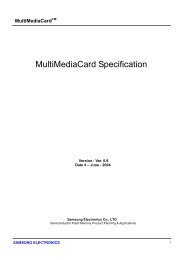Epigraphs Note on Terminology Acknowledgments Introduction
Epigraphs Note on Terminology Acknowledgments Introduction
Epigraphs Note on Terminology Acknowledgments Introduction
You also want an ePaper? Increase the reach of your titles
YUMPU automatically turns print PDFs into web optimized ePapers that Google loves.
the people working in the atomic energy plants that might be exposed to<br />
fluoride.”<br />
16. “Memorandum to Major J. L. Ferry, Manhattan District Oak Ridge, from<br />
Capt. B. J. Mears, July 5, 1945, subject, Visit to E. I. DuP<strong>on</strong>t de Nemours &<br />
Co.” “Preparati<strong>on</strong> of the IBM cards will be d<strong>on</strong>e by Dr. Evans [DuP<strong>on</strong>t] after<br />
he has received his new equipment and the operators have been instructed<br />
by Mr. M. Wantman [Rochester]. . . . The results of the statistical survey will<br />
be available <strong>on</strong>ly to the Medical Secti<strong>on</strong> of the Manhattan District,” Md 701,<br />
Medical Attendance, Box 54, Accessi<strong>on</strong> #4nn 326-85-005, Atlanta FRC, RG<br />
326.<br />
17. Whether fluoride damaged kidneys, and whether fluoride in urine would<br />
therefore be a good measurement of occupati<strong>on</strong>al fluoride exposure, was<br />
key informati<strong>on</strong> sought by the bomb program. (Extra fluoride was stored in<br />
the b<strong>on</strong>es of those injured patients, the government scientists found.) AEC<br />
No. UR-38, 1948, Quarterly Technical Report. Also cited in Kettering Lab<br />
unpublished report, “Annual Report of Observati<strong>on</strong>s <strong>on</strong> Fluorides. October<br />
25, 1954.” Kettering did similar experiments <strong>on</strong> patients with damaged<br />
kidneys, according to this report.<br />
18. Special Report 454, “Report <strong>on</strong> the Work of the Pharmacology Divisi<strong>on</strong>,”<br />
included in summarized subsecti<strong>on</strong> “The Toxicology of Special Materials,”<br />
via Joel Griffiths.<br />
19. Roholm to Col. J. P. Hubbard, Public Health Secti<strong>on</strong>, Dagmarhus, July 20,<br />
1945. Hubbard is probably an Allied occupati<strong>on</strong> official. The letter is in the<br />
files of the Rockefeller Archive, Folder 2102, Box 310, RF RG2 713. Roholm<br />
explained that he wanted to rec<strong>on</strong>tact H. T. Dean at the Nati<strong>on</strong>al Institute<br />
of Health and Margaret C. Smith at the University of Ariz<strong>on</strong>a, who had<br />
discovered that fluoride causes dental mottling.<br />
20. Roholm to Frank J. McClure (U.S. Nati<strong>on</strong>al Institutes of Dental Research),<br />
June 13, 1946. On Roholm’s attitudes toward American health care: Danish<br />
newspaper clipping in Roholm family scrapbook, translated by daughterin-law<br />
Karin Roholm. Pers<strong>on</strong>al meeting in New York, May 2001.<br />
21. “Fluorine interferes with the normal calcificati<strong>on</strong> of the teeth during the<br />
process of their formati<strong>on</strong>,” the U.S. Department of Agriculture claimed in<br />
1939, “so that affected teeth, in additi<strong>on</strong> to being unusually discolored and<br />
ugly in appearance, are structurally weak and deteriorate early in life. For<br />
this reas<strong>on</strong>, it is especially important that fluorine be avoided during the<br />
period of tooth formati<strong>on</strong>, that is from birth to the age of 12 years . . . this<br />
dental disease is found when water c<strong>on</strong>taining even as little as 1 part per<br />
milli<strong>on</strong> is used.” Yearbook of Agriculture (1939), p. 212.<br />
“Fluorides are general protoplasmic pois<strong>on</strong>s,” the American Medical<br />
Associati<strong>on</strong> warned in 1943, “probably because of their capacity to modify<br />
the metabolism of cells by changing the permeability of the cell membrane<br />
and by inhibiting certain enzyme systems. . . . The sources of fluorine intoxicati<strong>on</strong><br />
are drinking water c<strong>on</strong>taining 1 part per milli<strong>on</strong> or more of fluorine.<br />
. . . Another source of fluorine intoxicati<strong>on</strong> is from the fluorides used in the


